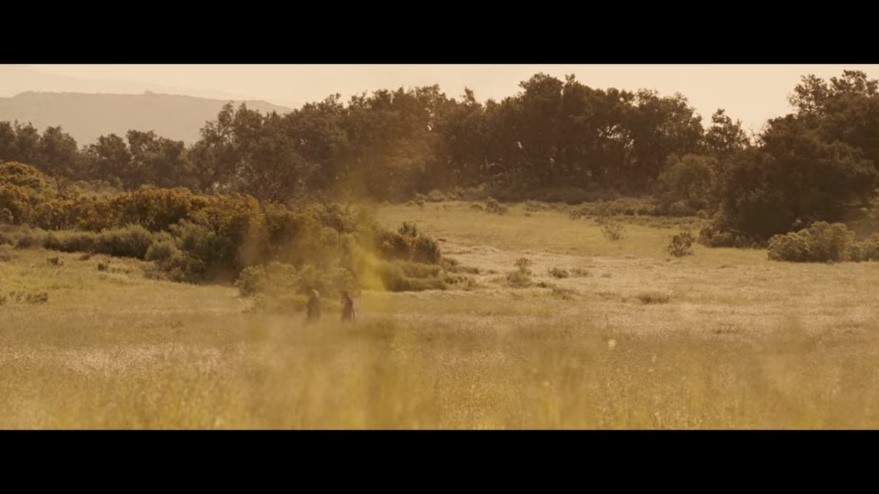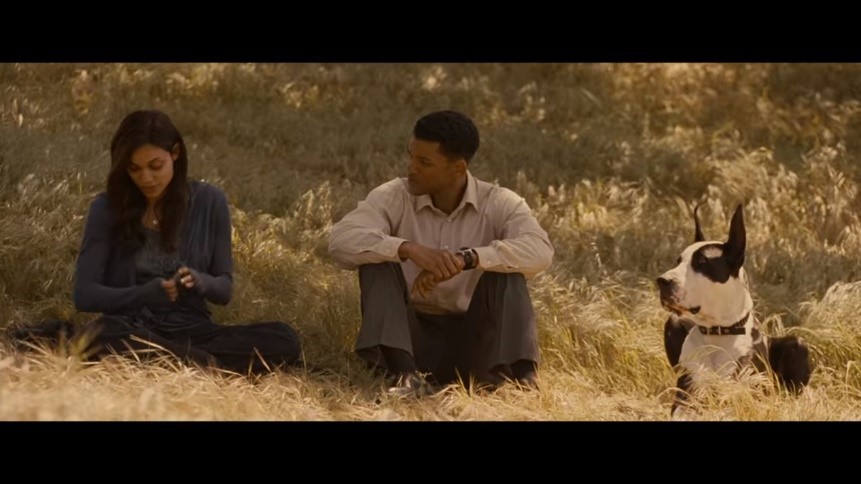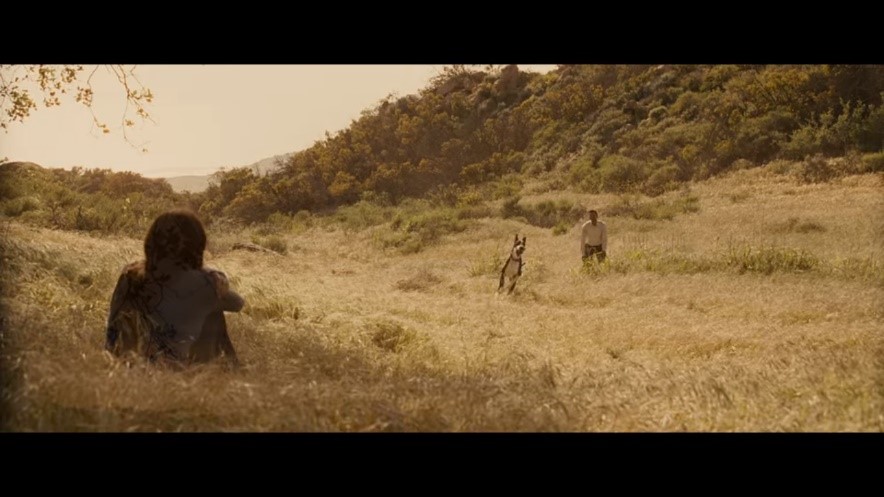Seven Pounds is a 2003 drama film directed by Gabriele Muccino which explores the relationship between humans and non-human animals, specifically focusing on the bond between human and dog. The film highlights how through feelings of trust and dependency, combined with overcoming societal stereotypes, both humans and dogs can utilize the time they spend together as a coping mechanism to act as a distraction towards the possibility of imminent death as a result of terminal health problems.

In the scene (Fig 1), Tim, who is falsely using his brother Ben’s name, and Emily take her dog Duke, who is a Great Dane, for a walk in the fields after a discussion about her deteriorating heart condition. Muccino uses a range of visual design elements within this scene to create pathetic fallacy through the infiltration of warm, golden, and natural lighting throughout to not only highlight the emotional support Duke provides for Emily, but also how Duke acts as Emily’s source of hope. This is a result of the connotations created by the use of golden light; the colour gold often causes us to experience feelings of compassion and prosperity, simultaneously emphasising Emily’s dependence on Duke in order to escape from the reality of her deteriorating health as well as allowing a deeper connection to develop between the two animals. Whilst Muccino’s lighting choices may initially appear as a contradicting element when compared to the pessimistic tone of conversation present in the scene, this argument is outweighed by the insight into Emily’s coping mechanisms and how she is able to use her dependency on Duke to gain the emotional support needed to cope with her health problems.


These ideas surrounding the depth of the connection in the human/non-human animal relationship between Duke and Emily are further explored through the physical portrayal of Duke. The scene uses medium shots of Duke (Fig 2) to focus on his physical appearance such as sharp facial features and cropped ears, as well as his size in comparison to other animals (Fig 3). Duke’s dark, sharp facial features and large size create the possibility of being initially interpreted as an aggressive and dangerous animal, therefore adhering to the usual stereotypes of large dogs and causing him to appear as an unsuitable companion for Emily due to her debilitating health. Furthermore, Duke’s cropped ears provide a moment of irony in the scene since society often views large dogs as aggressive, whereas it can be argued that by performing this procedure, it is humans who have partaken in an act of aggression since this practice is predominately used for cosmetic aesthetic nowadays rather than for health purposes, therefore questioning the ethics behind this procedure. However, the film uses the emotional bond between Emily and Duke to overcome these preconceptions of Great Danes, subsequently undermining the stereotypes that exist in society surrounding large dogs by highlighting the benefits of companionship that are possible between humans and non-human animals regardless of physical appearance, which, in turn, provides Emily with a coping mechanism for her health conditions.
Bibliography:
- Muccino, Gabriele, dir., Seven Pounds (Sony Pictures, 2008)